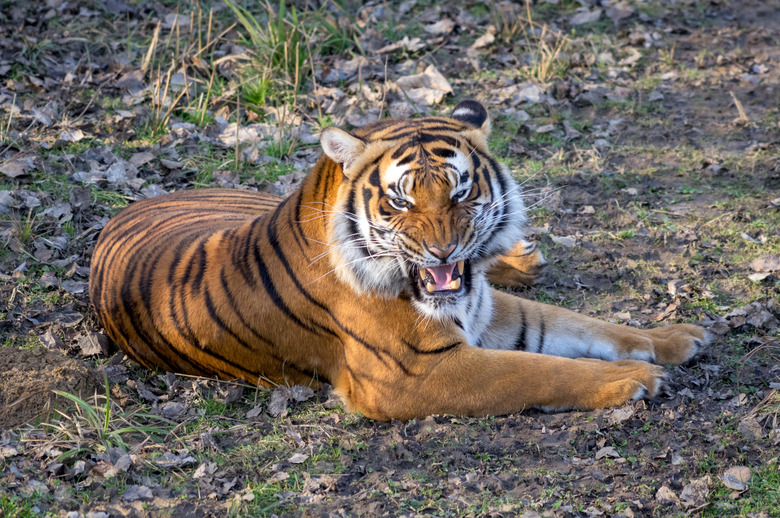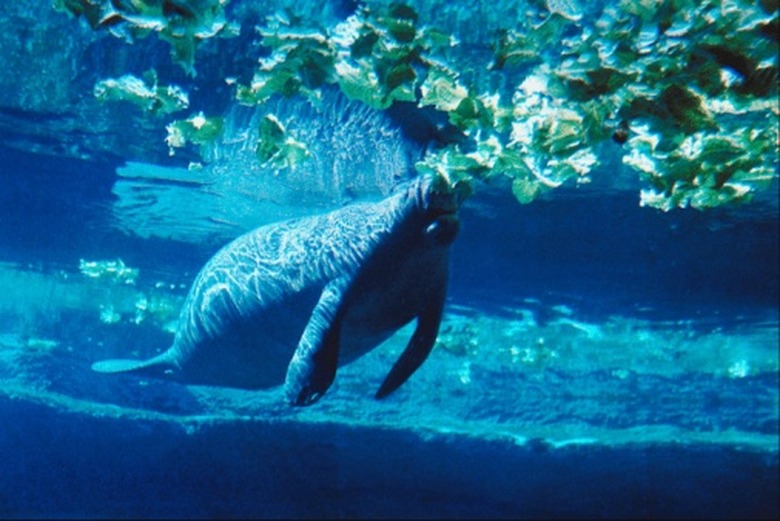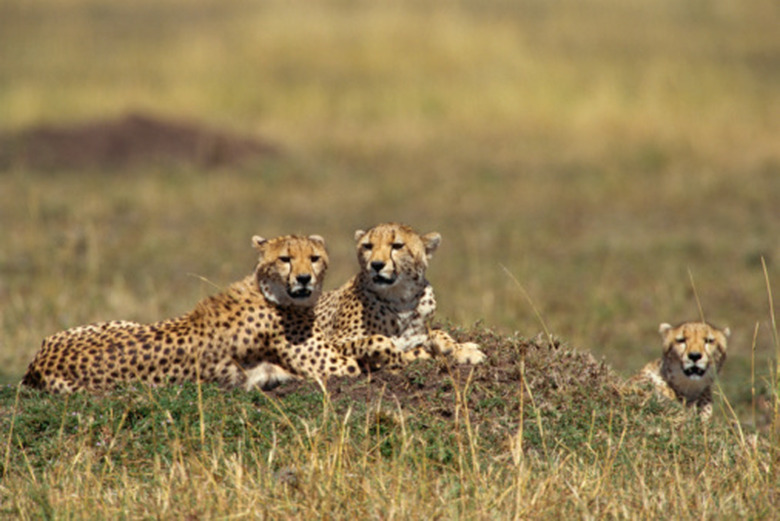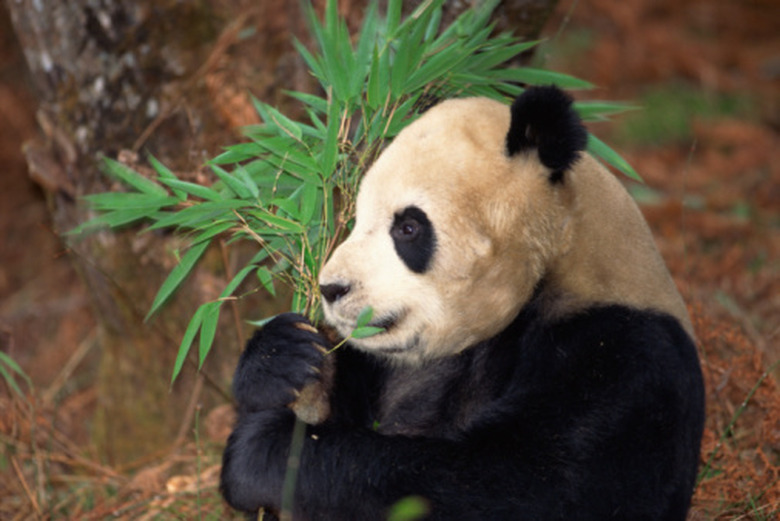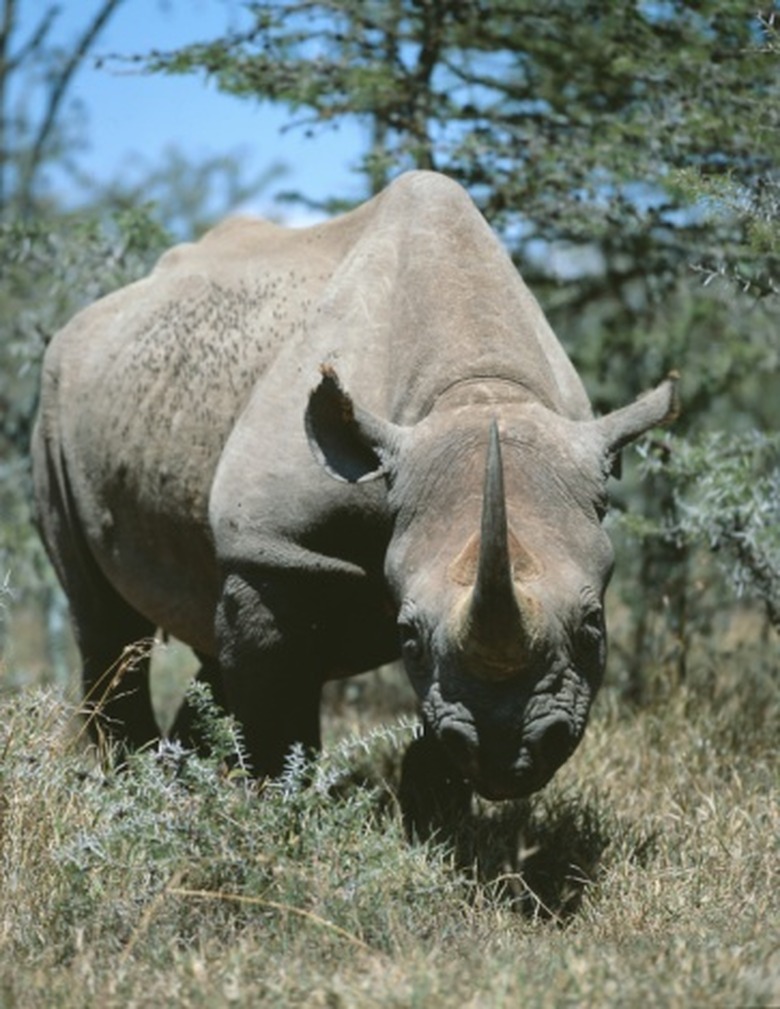Five Endangered Species Of Animals
Most endangered species face extinction due to habitat loss and lack of genetic variation. Lack of genetic variation occurs when the population's numbers drop below a critical number. The decline in population may happen due to habitat loss, hunting, disease, predation or environmental degradation such as pollution. Habitat loss may happen naturally or may be human-caused. Wildfire due to lightning, for example, may severely impact a habitat. Farming, development and pollution also destroy habitats. Sadly, any five endangered species list barely hints at the number of animals in danger of extinction and doesn't touch the multitude of endangered plants. Included here are endangered species examples from around the world, starting with the world's five most endangered animals.
Five Most Endangered Animal Species
Five Most Endangered Animal Species
The most endangered animal in the world is the Malayan tiger, a victim of poaching and habitat destruction.
At number two on the top five endangered animals list can be found the Santa Catalina Island rattlesnake. Feral cats, like on many other islands, decimated the population.
The third most endangered species in the world is Ridgway's hawk, another victim of habitat destruction.
Conservation efforts along the east coast of North America continue to work to save the hawksbill turtle. Besides being hunted for their meat and shells, the hawksbill turtle's eggs were considered an aphrodisiac and taken as soon as they were laid.
Number five on the world's most endangered list is the eastern black rhino, hunted nearly to extinction by poachers selling body parts for their supposed medicinal value.
Endangered Species in the Ocean
Endangered Species in the Ocean
In the ocean, the endangered animals list begins with the hawksbill turtle. Hunting for its meat and shell, theft of its eggs and destruction of the coral reef species it feeds on all contribute to the decline of the hawksbill turtle. Next on the list is the vaquita, a dolphin-like cetacean discovered in the Gulf of California in 1958. Only about 30 remain. The blue whale, next on the marine endangered species list, faces extinction due to hunting. Marine pollution, habitat destruction and fishing nets have contributed to the decline of the Kemp's Ridley sea turtle. Hunting and predation have severely impacted the Stellar sea lion population (also called the northern sea lion).
Endangered Animals in Africa
Endangered Animals in Africa
Endangered and threatened African animals include lions and forest elephants, but the most endangered animal in Africa receives much less attention. The riverine rabbit population numbers less than 250 adults. Hunting, predation by dogs, habitat loss and accidental snaring have all contributed to the decline of this mammal. The northern white rhino ranks second most endangered on some lists, while other lists include the Ethiopian wolf. Hunting and habitat loss impact both species. Mountain gorillas rank in the top five endangered animals in Africa, as do black rhinos and cheetahs.
Endangered Animals in North America (and Hawaii)
Endangered Animals in North America (and Hawaii)
The endangered animals list in North America begins with the Oahu tree snails. Shell collectors, habitat destruction and invasive plant and animal species, including rats, have reduced the population's range to the upper edges of two volcanic ridges on Oahu. Next comes the red wolf. Hunting and habitat destruction reduced their population to 17. The red wolf population has increased to over 100 thanks to conservation efforts in North Carolina. Kemp's Ridley sea turtles, decimated by hunting, egg destruction and fishing gears, are slowly recovering with help from people along the east coast. The California condor has also benefited from conservation efforts. After the last wild nine were captured, breeding programs have released 150 back into the wild, where normal breeding has brought the population to about 300. The reasons for the decline of the Vancouver Island marmot aren't completely understood, but one hypothesis is that clear-cutting on the island exposed this house cat-sized herbivore to predators.
Endangered Animals in South America
Endangered Animals in South America
Fewer than 500 three-toed sloths are believed to remain in South America, mainly due to habitat destruction. Hunting and habitat destruction have reduced the population of jaguars, the third largest felines in the world, to under 15,000. As residents of heavy rainforest, deforestation negatively impacts howler monkeys. Many species of macaws have been decimated by deforestation and pet collectors, with some species already considered extinct. Amazonian manatees, hunted for their meat, also suffer due to habitat loss.
Endangered Animals in Europe
Endangered Animals in Europe
Endangered animals in Europe, like Earth's other regions, includes a variety of wildlife. Habitat destruction remains the leading cause of the decline of these animals. Included on the lists of endangered European animals are the saiga antelope, Iberian lynx, slender-billed curlew, all six species of wall lizards, and the Karpathos frog.
Endangered Animals in Asia
Endangered Animals in Asia
Illegal hunting and wildlife trade continue to endanger many species in Asia, not just tigers, rhinos and elephants. Siberian musk deer, sun bears, Sunda pangolins, tokay geckos and Burmese pythons all fall victim to illegal animal trafficking. Most of these animals are taken for use in folk medicines, while python skins remain in demand for the fashion industry. The Javan slow loris, the only venomous primate, is protected by Indonesian law but still poached for sale as an exotic pet. Sadly, most die after poachers remove their teeth.
Endangered Animals in Australia and New Zealand
Endangered Animals in Australia and New Zealand
Island ecosystems remain particularly sensitive to invading species. Feral cats are among the most destructive, but rats and mice do much damage as well. Australia and New Zealand are not immune to these invaders. Endangered species examples from these island nations include two species of kiwi, the flightless nocturnal birds found in New Zealand. Maui's dolphin, a subspecies of New Zealand's north coast's Hector's dolphins, are listed as critically endangered. In Australia, the tiny southern corroboree frog population has fewer than 150 breeding males. The Margaret River burrowing crayfish and the Lord Howe Island phasmid (nicknamed 'land lobster'), possibly the world's most endangered insect, are both critically endangered due to habitat destruction and predation by invasive species.
References
- Smithsonian National Zoological Park: Giant Panda
- WWF: Critically Endangered Javan Rhinos and Calves Captured on Video
- Marine Insight: 10 Endangered Ocean Species and Marine Animals
- Smithsonian: North America's Most Endangered Animals
- Inhabitat: Infographic – The Endangered Animals of Latin America and How You Can Help
- The South African: In Pictures: The Ten Most Endangered Animals in Africa [Infographic]
- Africa Ranking: Top 10 Most Endangered Animals in Africa
- Current Results: Endangered Animals in Europe
- The Guardian: Wildlife Under Threat from Asia's Poaching Crisis
- Scientific American: The World's Worst Invasive Predators are Cats, Rats, Pigs and...Hedgehogs?
- Australian Geographic: Australia's Most Endangered Species
- WorldAtlas: What Animals Live in Australia and Oceania?
Cite This Article
MLA
Blaettler, Karen G. "Five Endangered Species Of Animals" sciencing.com, https://www.sciencing.com/five-endangered-species-animals-8083125/. 22 November 2019.
APA
Blaettler, Karen G. (2019, November 22). Five Endangered Species Of Animals. sciencing.com. Retrieved from https://www.sciencing.com/five-endangered-species-animals-8083125/
Chicago
Blaettler, Karen G. Five Endangered Species Of Animals last modified August 30, 2022. https://www.sciencing.com/five-endangered-species-animals-8083125/
